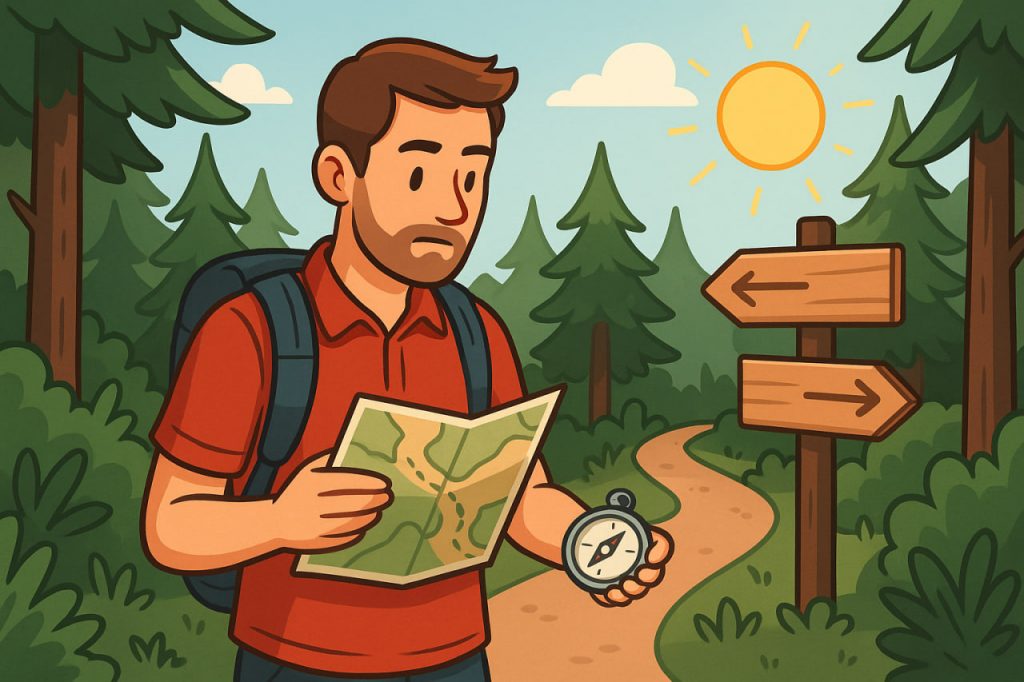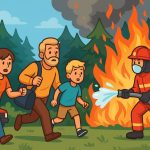Forests are beautiful places for hiking, camping, and exploring, but they can also be disorienting. Trees often block landmarks, and trails may look similar. Getting lost in the forest can quickly become dangerous if you are unprepared. Learning how to navigate and what steps to take in an emergency is essential for anyone spending time in nature.
1. Prepare Before Entering the Forest
- Plan your route: Study a map and decide where you are going.
- Tell someone: Inform a friend or family member about your destination and expected return time.
- Bring essentials: Map, compass, charged phone, whistle, flashlight, water, and snacks.
- Wear proper clothing: Dress in layers, use sturdy shoes, and choose bright colors to remain visible.
2. Pay Attention to Landmarks
- Observe unusual trees, rocks, rivers, or clearings as reference points.
- Use the sun’s position to stay oriented. In the Northern Hemisphere, the sun rises in the east and sets in the west.
- Notice trail markers, signs, or footprints if hiking along established paths.
3. Navigation Tools
- A map and compass are the most reliable tools, as phones may lose signal.
- GPS devices can help but should not replace traditional navigation.
- A simple technique: regularly turn around and look back so the path is familiar when returning.
4. What to Do If You Feel Lost
- Stop immediately and remain calm. Panicking will make the situation worse.
- Use the STOP method:
- Stop moving.
- Think about your situation.
- Observe your surroundings.
- Plan your next step.
- Blow a whistle or use your phone to call for help if possible.
5. Survival Tips While Waiting for Help
- Stay in one place to make it easier for rescuers to find you.
- Create visible signals: bright clothing, fire smoke, or markings on the ground.
- Conserve energy and water.
- Build a simple shelter from branches and leaves if needed.
6. Prevention Is Key
Most cases of getting lost can be prevented with preparation. Hikers who carry basic tools, pay attention to surroundings, and stay calm in unexpected situations are much safer.
Conclusion
Not getting lost in the forest depends on preparation, observation, and calm thinking. With the right skills and habits, the forest becomes a safe place to enjoy rather than a dangerous maze.
Glossary
- Compass – A tool showing direction relative to Earth’s magnetic poles.
- Landmark – A recognizable feature used for orientation.
- GPS (Global Positioning System) – A satellite-based navigation system.
- STOP method – A survival technique to stay calm and organized when lost.
- Shelter – A temporary protective structure in the wild.


